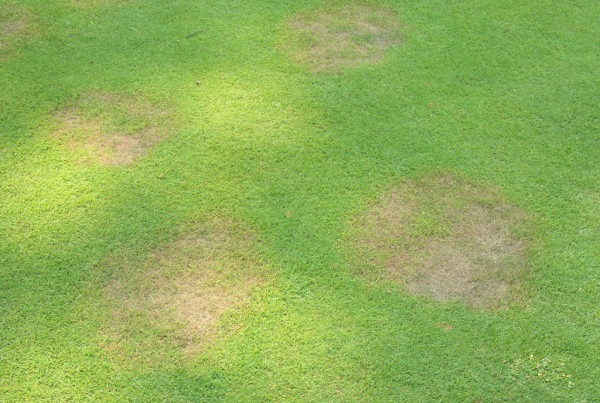Take All patch
Damage caused – Usually occurring during the summer months this disease appears as saucer-shaped patches growing to around 30 cm in diameter that may be slightly depressed. Affected grass has a light brown or sometimes bleached look. Attacks bent grass species only, therefore other grasses and weeds may be present within the dead area growing unaffected. The bent grass species attacked may be easily pulled from the sward and black spots or areas can be seen on the roots and base of the plant.
Grass species affected – Bent grasses only (Agrostis spp.)
Factors promoting infection – Alkaline pH levels, sandy soils, surface soil compaction, poor water drainage, humidity, has been associated with sterilised imported root zones (top-soils). Prevention and treatment – There is no current effective treatment for Take-all patch for the home market although there is now a commercial treatment available. Correct cultural practices will be the key to preventing this disease. Monitor pH levels and do not apply treatments to the surface that may raise the pH level. Light applications of sulphate of iron could be effective in lowering the surface pH values. The sowing of any grass species other than the bent grass variety will be an effective biological control. Keep adequate nutrition and ensure the surface is relatively free draining at all times.
